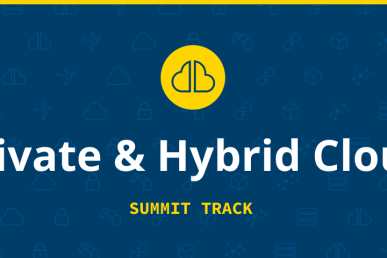If you’re just getting started with OpenStack, there are twice as many hands-on sessions and workshops at the upcoming Austin Summit.
We go behind the scenes of a cloud application development training session organized by the Application Ecosystem Working Group. Superuser got the scoop from session organizers Intel principal engineer Bill Giard,Brandon Bohling, Intel enterprise architect, and Victor Diaz, Intel engineering manager.
The trio talks about what makes good cloud application architecture, the need to align application and infrastructure teams and how to get involved if you can’t make the session.
What does good cloud app architecture look like?
Cloud-aware applications are designed, implemented, deployed and consumed differently that’s why they require important design decisions. A good cloud application architecture embraces loose coupling, utilizes RESTful services for data consumption and business logic and abstracts compute, networking and storage resources to take advantage of the cloud infrastructure. A cloud application will react to environment changes, it will be prepared to failure and all its components are decoupled.
Scalability, fault-tolerance, security, high availability and elasticity are characteristic of a well-designed architecture.
What cloud native apps do you envision? What API+SDK support do we need?
There are several implications for development of secure and usable applications that work on any device, front-end multi-platform, back-end cloud, connected through services, etc.
In the session, our presenters will show some reference app architectures examples: front-end detail (HTML5/CSS3 – angular/bootstrap), services detail (JavaScript/Node.js – Sail.js), database detail (relational – MySQL or SQLServer, document – MongoDB).
The biggest support needed for our developers [is] centered on application reference designs that enabled consumption of services from both new and legacy solutions – specifically around leveraging authentication models and integration with our corporate Active Directory environment.
How did this session come about?
A large community of application developers and ecosystem of development tools is growing around OpenStack. Engaging the application development teams with solutions that address the business problems enterprises are facing with security, multiple client platform support and cloud integration is very important. There is a big need to align both the application and infrastructure teams to enable the business and we realized that the alignment comes together when designing applications for cloud architectures as it enables fast and scalable deployments at significantly lower costs.
This session is brought by the App Ecosystem WG and the Enterprise WG…It’s designed to help application developers and independent software vendors (ISVs) enhance the design and development of existing and new applications for the cloud.
It’s a beginner session – what’s the best way to prep for it?
The invitation is open to everyone, this session track will be primarily interesting for application developers and ISVs who are designing, developing and deploying applications that run on OpenStack clouds. As a minimum, the participants should have a background with scripting, building tools, or techniques to manage cloud platforms and a good understanding in topics like software development, software-defined networks (SDKs), APIs and application deployment.
What’s the focus on in just a 40-minute session?
The session will be focused on architecture decisions and key things to consider for integration with existing applications, including design patterns, code samples and best practices for developing cloud-aware applications and supporting business strategy for modern application development (cloud, mobile/multi-OS, application security and improved user experience).
We will share the challenges and approaches, development practices and technologies used to accelerate modern application solutions and cloud deployment.
If people can’t attend – are there any upcoming events/workshops they can check out or ways they can be updated on future similar events?
One way to be updated on future similar events is joining the user-committee mailing list, watch for emails that are prefixed by [app], and join the discussions.The idea is to have a series of training programs and courses for upcoming Summits, that can be beneficial for application developers.
Another way is joining the App Ecosystem WG meetings, to grow the application ecosystem, and even working with us to define outlines for the sessions and the content.
How can we help the DevOps community work with app devs to understand OpenStack as a platform for end user apps development?
DevOps is fundamentally about increasing time to market while improving or maintaining quality levels. The cloud architecture provides increased flexibility and in the case of platform-as-a- service (PaaS) increased standardization to enable quicker deployment models. In our usage models we have improved collaboration with partner teams, providing the ability for services to be made available and consumed rapidly and increased our pace of deployment. This supports aour strategy for both continuous integration, integrated unit test, and continuous delivery.
Anything people should know or that you would like to add:
If you are an application developer interested in transitioning from traditional to cloud-aware architectures, you need to:
• Understand the business and technical benefits of cloud computing.
• Be familiar with the principles of cloud application architecture and understand the differences versus architecting cloud and non-cloud applications.
• Learn and apply design patterns specific for cloud-aware applications.
#Session details
How to Architect Applications for the Cloud
Wednesday, April 27, 11:00 a.m.–11:40 a.m.
Austin Convention Center – Level 4 – MR 18 A/B
Cover Photo // CC BY NC
- Demystifying Confidential Containers with a Live Kata Containers Demo - July 13, 2023
- OpenInfra Summit Vancouver Recap: 50 things You Need to Know - June 16, 2023
- Congratulations to the 2023 Superuser Awards Winner: Bloomberg - June 13, 2023

)










